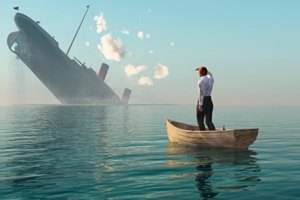Author: Steve Randazzo / Source: MarketingProfs Back in the early 1900s—when digital communication would have been considered sci-fi an


Back in the early 1900s—when digital communication would have been considered sci-fi and “going viral” might have meant catching an unpopular illness—ads began sprouting up across the globe touting the White Star Line’s newest cruise ship: the Titanic.
Tickets for its trip across the Atlantic sold like hotcakes, and thousands of people from across the globe flocked to England to witness the 45,000-ton monstrosity in all its glory.
In a sense, the Titanic’s maiden voyage was one big experiential marketing campaign for the White Star Line. At the time, the company was facing stiff competition, so it spent the equivalent of $400 million building an event that would draw in huge numbers of consumers and show them why it’s the best in the biz.
We all know how that turned out.
When planning an experiential marketing campaign, it can be tempting to sink a titanic budget into the splashiest one-day event ever conceived, but that single-minded pursuit of buzz is risky. There are icebergs in those waters.
Photographic Evidence
Approximately 100 years later, Samsung took a similar big-or-bust approach when it set up a one-day experiential campaign in two of the busiest cities in America: New York and Los Angeles. The company gave away brand-new $800 cameras to people who agreed to trade in their old ones; and, when all was said and done, more than 1,000 cameras were handed out. Yes, that’s nearly $1 million of product.
Surely, the consumers who received free merchandise walked away happy that day, and Samsung garnered plenty of media coverage leading up to the event. But did the company reap any long-term rewards from the campaign?
Ultimately, it seems Samsung succeeded in taking 1,000 potential consumers out of the market, and it missed out on $1 million of potential revenue. Unless the company somehow broke even by selling tons of accessories to the people who received free cameras, that campaign was counterproductive.
In another, similar example, Bud Light poured hundreds of millions of advertising dollars into its “Up for Whatever” experiential campaign. The goal was to hook Millennials into the brand by promoting a cool, carefree, party-animal lifestyle
From a purely social media standpoint, it seems the company could declare victory. Three catchy YouTube videos bearing the #UpForWhatever hashtag received more than 1 million views in 72 hours. There were also 55,000 likes on the campaign’s Facebook page over the same timeframe, and user-generated social content surrounding the campaign reached 15 million people.
However, we’ve now learned that…

COMMENTS